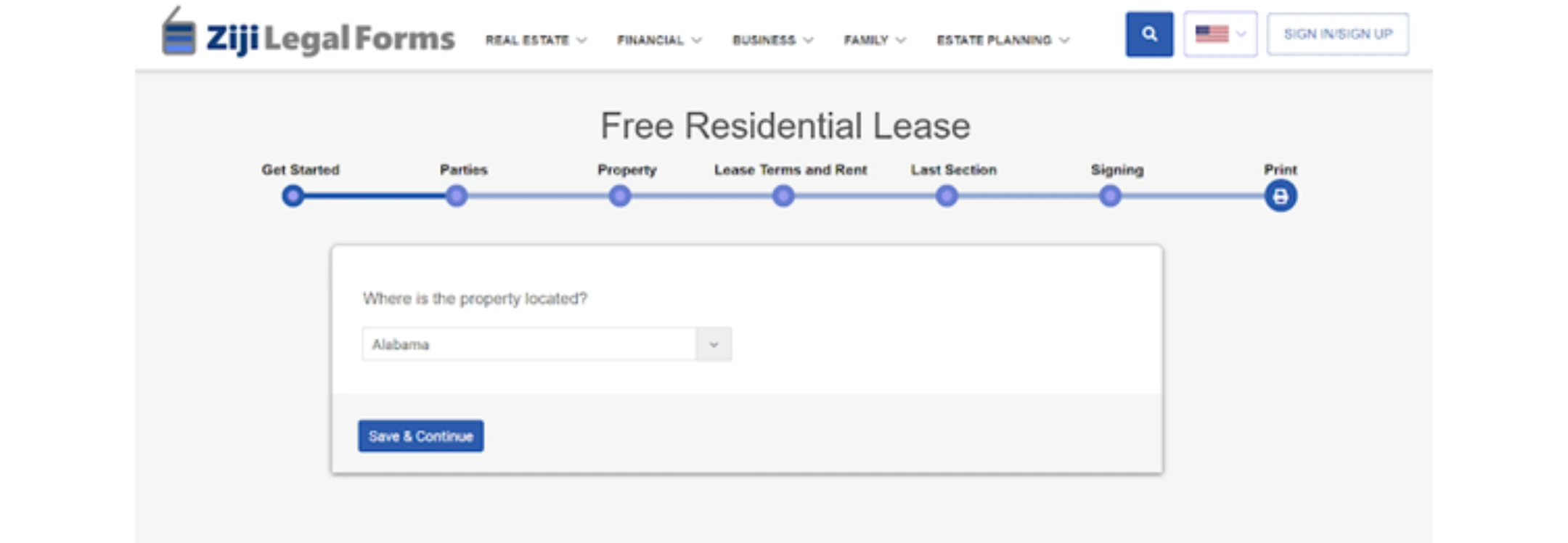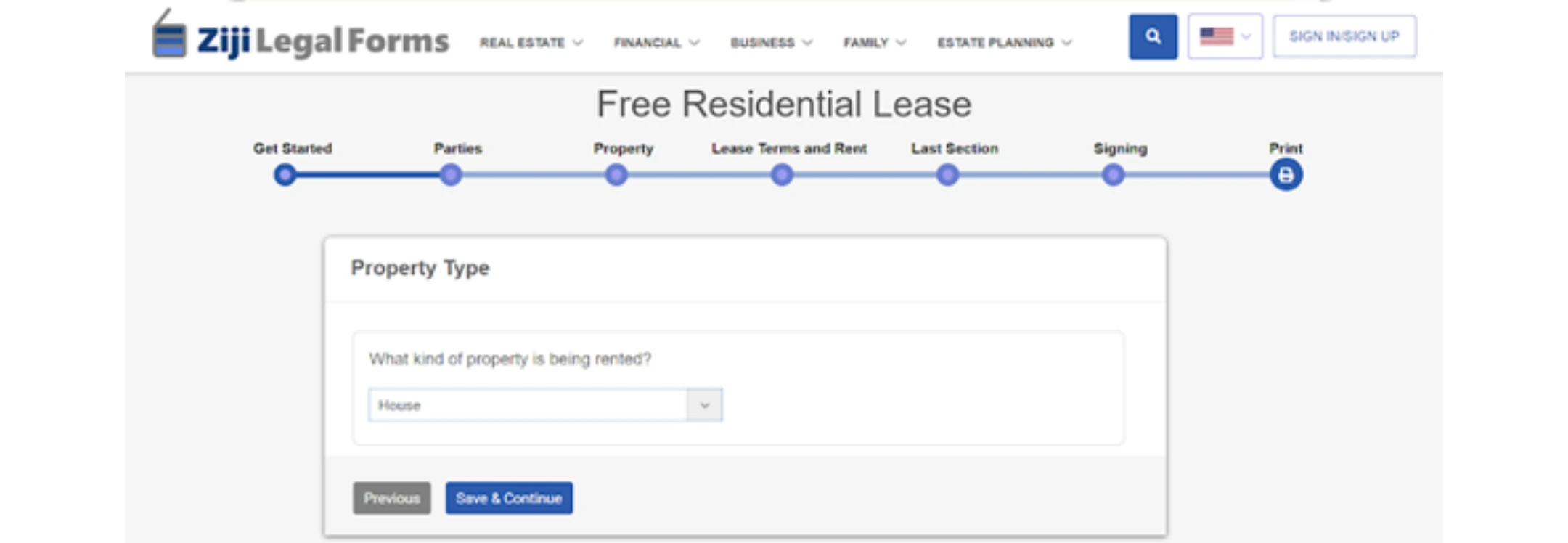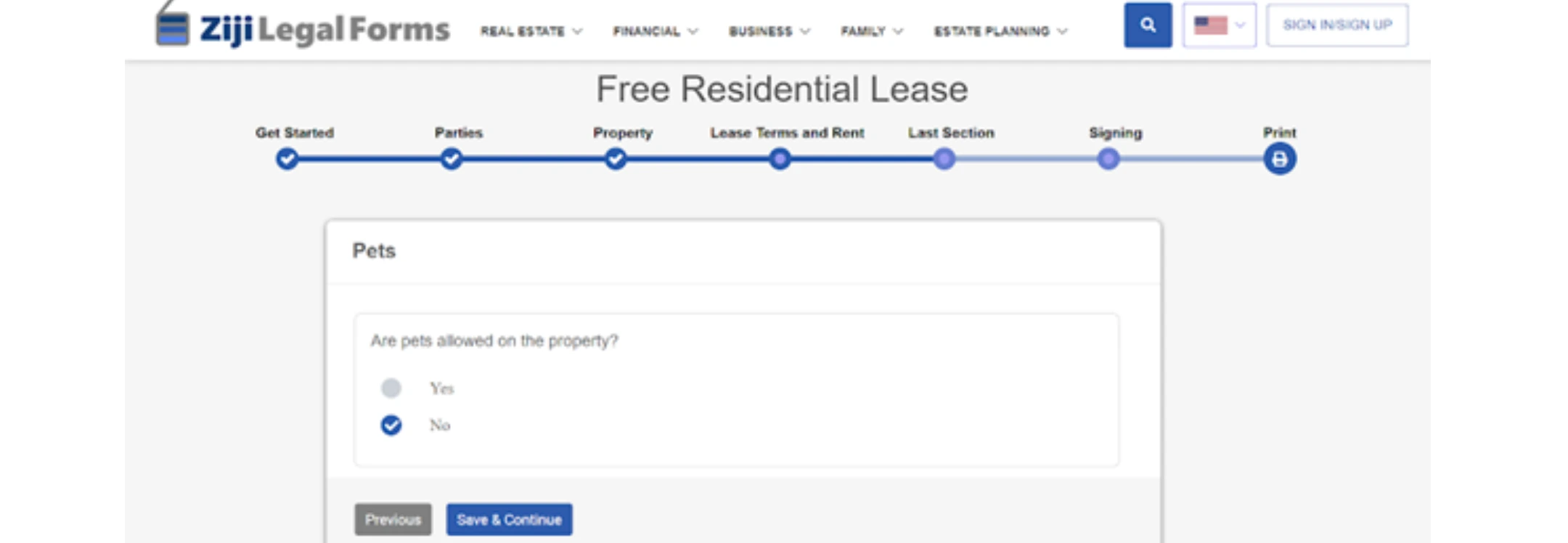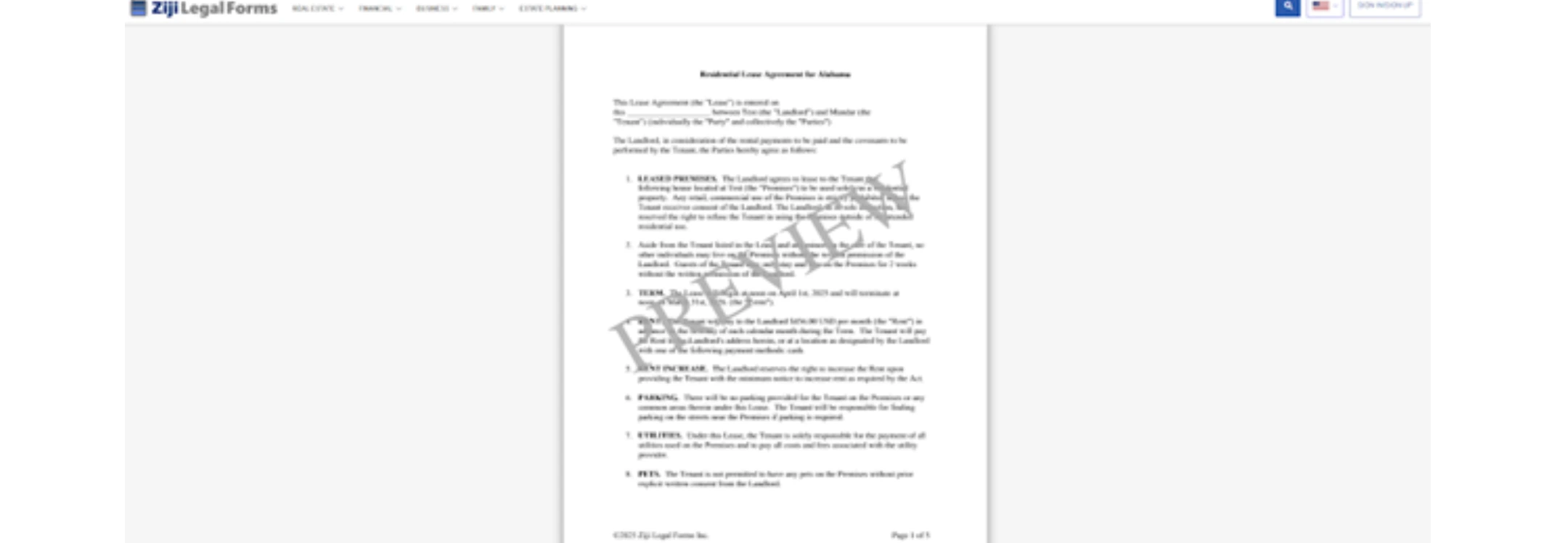TL;DR
- Creating a legally sound residential lease agreement is essential for every landlord.
- Whether you're managing one rental unit or dozens, the lease is more than just a formality, it's a legal contract that protects your property, your income, and your relationship with the tenant.
- This comprehensive guide outlines all the elements that should be included in a residential lease agreement, and how platforms like Ziji Legal Forms simplify the process of creating reliable, legally compliant residential lease agreements.
Introduction to Residential Lease Agreements
A residential lease agreement (also referred to as a residential rental contract, residential lease form, or residential lease agreement form) is a legally binding contract between a landlord and a tenant that outlines the terms of a rental property. A good lease ensures clear communication, defines responsibilities, and provides a framework for conflict resolution. It must be comprehensive, legally compliant, and customized to the specific property and location.
Key Elements of a U.S. Residential Lease Agreement
Below is a breakdown of the essential elements every residential lease rental agreement should include:
1. Names of All Parties
The lease should clearly list the full legal names of the landlord and all adult tenants responsible for the agreement. This ensures clarity in enforcement and legal proceedings, if ever needed.
2. Property Description
Include the complete address of the rental property, including apartment or unit number if applicable. Also specify any additional features like access to shared amenities, parking spaces, or storage areas. This ensures the lease clearly defines what is being rented and avoids confusion later.
3. Lease Term
Specify whether the lease is a fixed-term or a month-to-month arrangement, and include the exact start and end dates. A fixed-term lease provides stability, while a periodic tenancy allows more flexibility.
4. Rent Amount and Payment Terms
State the monthly rent amount, the due date, any grace periods, accepted payment methods, and policies on late fees or bounced checks. Providing these details up front helps set expectations and reduces potential disputes.
5. Security Deposit Terms
Mention the amount collected, its purpose, applicable state rules about how and where it must be held, and the timeline for its return. Transparency about deposit handling can prevent tenant-landlord conflicts at move-out.
6. Maintenance Responsibilities
Define the division of maintenance tasks—tenants might handle minor upkeep like changing bulbs or yard care, while landlords are responsible for structural repairs and major appliances. It’s important to clarify how and when tenants should report maintenance issues.
7. Fixtures and Appliances
List all appliances included in the lease, such as the refrigerator, stove, dishwasher, or washing machine. Also clarify who is responsible for maintaining or replacing each item, and whether repairs must be reported in writing.
8. Utilities and Services
Clarify which utilities (like water, gas, electricity, and internet) are included in the rent and which must be paid separately by the tenant. Also note if services like garbage collection or lawn care are provided.
9. Occupancy Limits
Set the maximum number of residents allowed in the unit, and define your policy on guests and subletting. This ensures you maintain control over the number of occupants and property usage.
10. Pet Policy
Indicate whether pets are allowed, specify any breed or size restrictions, and outline associated fees or deposits. If pets are not allowed, that restriction must be clearly stated.
11. Entry and Notice Requirements
Explain under what circumstances landlords can enter the unit (e.g., for repairs or inspections) and what notice period is legally required. Typically this is 24-48 hours to balance landlord access with tenant privacy rights.
12. Termination and Renewal Conditions
Detail the process for lease renewal, the required notice period for non-renewal, and any penalties for early termination. This helps both parties understand their rights and obligations at the end of the lease term.
13. Required Legal Disclosures
Include mandatory disclosures such as lead-based paint information for homes built before 1978, mold presence, or pest control notices depending on state requirements. Some states require specific disclosure language to be included.
Using a customizable residential lease agreement template from Ziji Legal Forms can help ensure you include all the key components accurately and in compliance with your state laws.

Optional Clauses Landlords Should Consider
While not required, the following clauses can protect landlords further:
Smoking Policy
This clause specifies whether smoking is permitted on the property and, if so, where. Many landlords choose to prohibit smoking indoors to prevent damage and odors, and to comply with local health ordinances.
Renters Insurance Requirement
Requiring tenants to carry renters insurance protects both the tenant and landlord in case of fire, theft, or damage. This clause can also reduce liability for landlords by shifting coverage responsibility to the tenant.
Rules for Home Businesses
If tenants intend to operate a home business, landlords may want to restrict the type of business or require prior approval. This clause helps ensure residential zoning is maintained and that other tenants are not disturbed.
Penalties for Unauthorized Occupants or Alterations
Landlords can specify fines or corrective actions if tenants allow additional occupants without permission or make alterations to the unit without approval. This clause protects property condition and lease compliance.
Subletting vs. Assignment of Lease
Subletting refers to the tenant renting out the property (or part of it) to another individual while still being legally responsible for the lease. Assignment, on the other hand, transfers the entire lease and its responsibilities to a new tenant. Landlords should clearly state whether either is allowed, and under what conditions approval is required.
These clauses can be easily added or removed when using a customizable residential lease agreement template.
How to Create a Lease Using Ziji Legal Forms
Ziji Legal Forms simplifies the lease creation process. Here's how:
1. Select your state to generate a compliant residential lease form.
2. Answer a few guided questions about your property, rent amount, and terms.
3. Customize additional clauses (utilities, pets, allowing smoking, etc.).
4. Download and review the lease document.
5. Have all parties sign electronically or in print.
Ziji Legal Forms ensures your residential lease agreement includes all required language and meets your state’s legal standards.
Finalizing, Signing, and Storing the Lease
Before finalizing, ensure that each party reviews the terms thoroughly and initials each page for clarity. Once the lease is signed, provide each party with a fully executed copy. Be sure to collect the first month's rent and the security deposit as specified. Storing a digital copy of the signed lease on a secure cloud storage platform ensures that the document remains safe and accessible. Most states accept digital signatures, making the process even more efficient.
Conclusion
A properly drafted residential lease agreement is critical to protecting your investment and establishing a strong landlord-tenant relationship. By ensuring all required terms are included and your lease aligns with local laws, you can avoid disputes and confidently manage your rental.
Platforms like Ziji Legal Forms offer customizable, state-compliant residential lease agreement templates that save you time, reduce legal risk, and give you peace of mind.
Whether you're drafting your first lease or refining an existing one, Ziji Legal Forms makes the process accessible and professional.
Residential Lease FAQs
What is a residential lease agreement also called?
It's also known as a rental agreement, rental contract, or tenancy agreement, all refer to the same legal document used to rent residential property.Why should landlords use a written lease?
A written lease clearly outlines each party’s rights and responsibilities, minimizes disputes, and holds up in court better than a verbal agreement.Can landlords enter the property anytime?
No. Landlords must give prior written notice (typically 24 hours) before entering the rental unit, unless there's an emergency.What are a landlord’s basic responsibilities?
Landlords must ensure the property meets health and safety standards, perform necessary repairs, and respect the tenant’s right to quiet enjoyment.Can tenants have guests or roommates?
Tenants may have overnight guests, but long-term occupants typically must be listed on the lease. Unauthorized long-term guests may violate the agreement.What’s the difference between fixed-term and month-to-month leases?
Fixed-term leases have set start and end dates for a set period of time, offering more income predictability for the landlord. Month-to-month leases renew every month until the landlord or tenant provides notice to end the lease. It offer more flexibility to adjust rent or termination but less stability in income.Are tenants allowed to sublet or assign the lease?
Only if permitted in the lease. Subletting allows tenants to rent to someone else temporarily; assigning transfers the lease completely to another person.What laws govern the lease?
The lease is governed by the laws of the state where the property is located, not where the landlord or tenant resides.Can I write my own lease without a lawyer?
Yes. Tools like Ziji Legal Forms let you create a customized, legally valid residential lease in minutes by answering a simple questionnaire.What jurisdictions can use our residential lease?
You can use our template to create a legal and valid residential lease for the following jurisdictions:| Alabama (AL) | Alaska (AK) | Arizona (AZ) | Arkansas (AR) | California (CA) |
| Colorado (CO) | Connecticut (CT) | Delaware (DE) | District of Columbia (DC) | Florida (FL) |
| Georgia (GA) | Hawaii (HI) | Idaho (ID) | Illinois (IL) | Indiana (IN) |
| Iowa (IA) | Kansas (KS) | Kentucky (KY) | Louisiana (LA) | Maine (ME) |
| Maryland (MD) | Massachusetts (MA) | Michigan (MI) | Minnesota (MN) | Mississippi (MS) |
| Missouri (MO) | Montana (MT) | Nebraska (NE) | Nevada (NV) | New Hampshire (NH) |
| New Jersey (NJ) | New Mexico (NM) | New York (NY) | North Carolina (NC) | North Dakota (ND) |
| Ohio (OH) | Oklahoma (OK) | Oregon (OR) | Pennsylvania (PA) | Rhode Island (RI) |
| South Carolina (SC) | South Dakota (SD) | Tennessee (TN) | Texas (TX) | Utah (UT) |
| Vermont (VT) | Virginia (VA) | Washington (WA) | West Virginia (WV) | Wisconsin (WI) |
| Wyoming (WY) |





